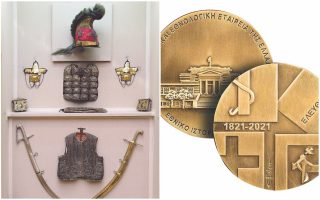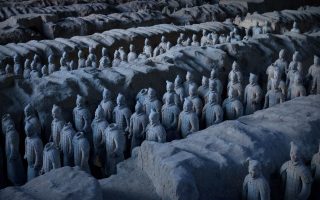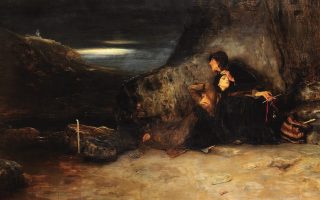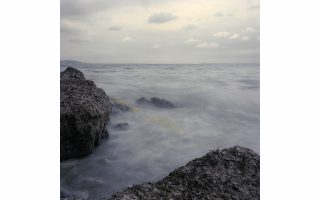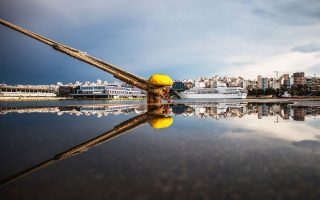Pottery from a bygone city and era
Exhibition at the Benaki Museum of Islamic Art presents the history of ceramics in Kutahya, Asia Minor
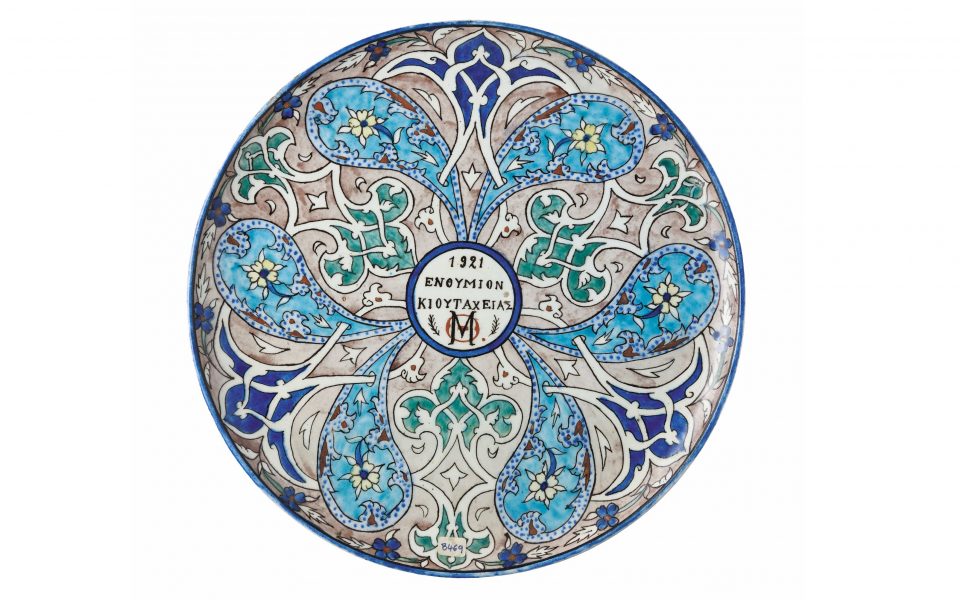
Imagine yourself at 2.30 p.m. on July 4, 1921, in Kutahya, Turkey. What would you see? A division of Greek army infantrymen getting ready to march triumphantly into the city. The operation to capture the city was part of a larger effort to seize control of the Constantinople-Baghdad railway, at Eskisehir, a key transit hub.
News of the capture was met with great enthusiasm by Greeks in Greece, Smyrna and the rest of the coast of Asia Minor. The famed pastry shop Luxe on Athens’ Patission Street soon even started selling “Kutahya” and “Eskisehir” ice cream. In just 15 months, however, the sweet taste of victory would turn bitter, and the triumph of the Greek forces on the other side of the Aegean would go the same way as Kutahya’s famed pottery: smashed into pieces like a ceramic plate falling on the floor and scattering its shards into the four winds. A civilization that was thousands of years old came to a violent end, uprooted and evicted.
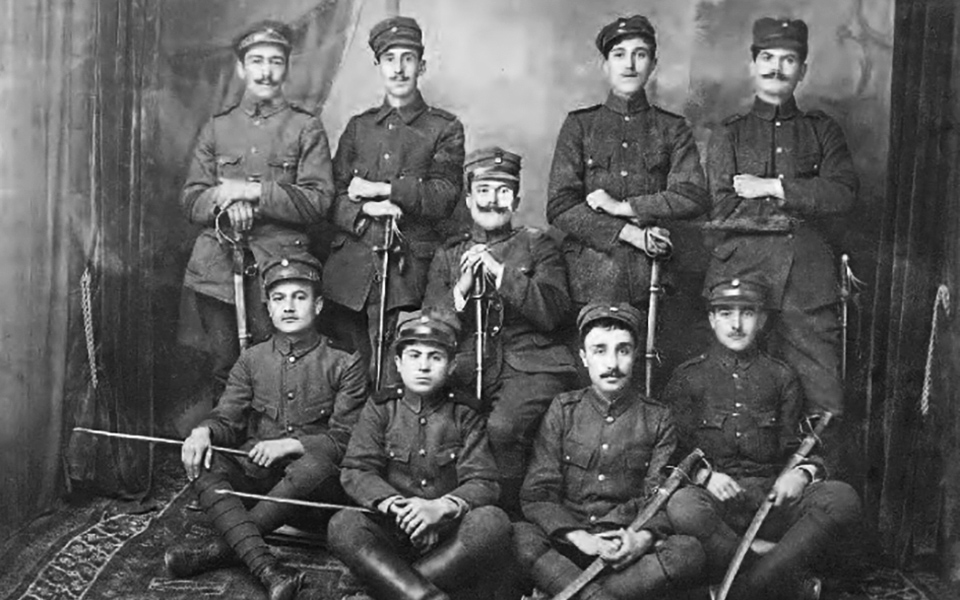
Historians later tried to put the fragments of the story back together. Then, a century later, a lawyer with a passion for the history of ceramics called Dinos Kogias came along and, with patience and dedication, completed the narrative with his research into the work that was done by Kutahya’s pottery workshops.
The items he collected along the way are a charming demonstration of the way that Kutahya managed to steal the pottery crown from Nicaea (Iznik) with utilitarian and decorative ceramics, such as tiles that graced Christian churches (across the Aegean and all the way to Mount Athos) and mosques in the Ottoman Empire.
This journey is the subject of an ongoing exhibition at the Benaki Museum of Islamic Art titled “Souvenir from Kutahya” and comprising 129 unique exhibits that relate not just to the period when the Greek soldiers were there, but also provide a more general overview of the local tradition in pottery before their arrival and after their departure.
It also traces the craftsmen who settled to Greece after their expulsion from Kutahya and the Armenians who fled to Jerusalem, while recording the city’s efforts after it became Turkish to carry on this tradition without the skilled hands that built its reputation. However, the period from late 19th to the early 20th century remains the exhibition’s focus.
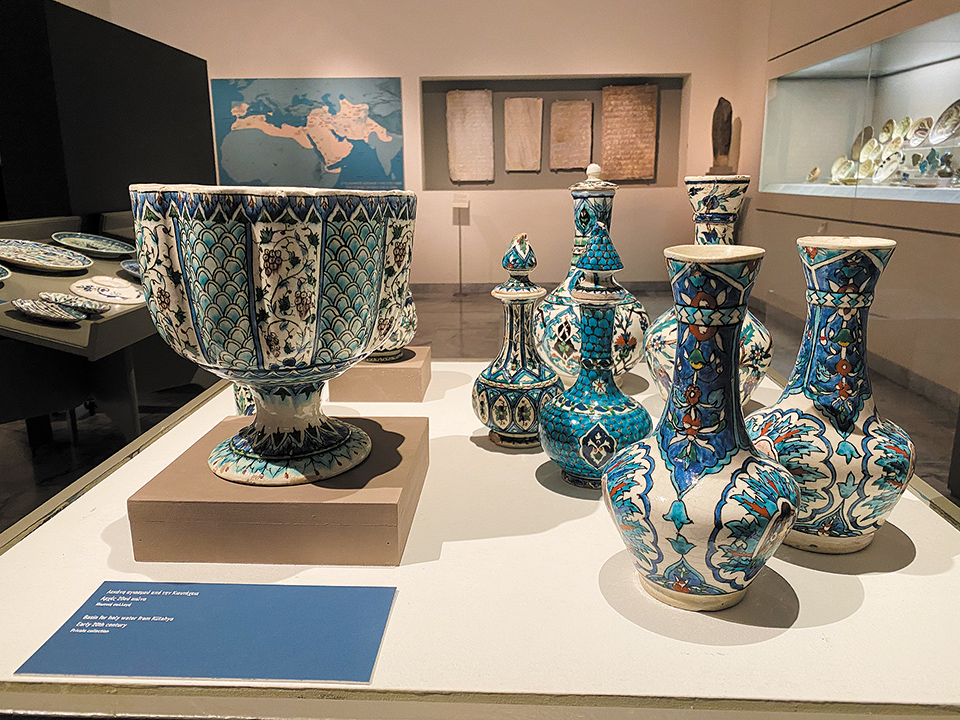
Kogias was born on the eastern Aegean island of Samos and grew up surrounded by pottery, developing a keen interest in the subject. He was not as fascinated by their appearance as he was by the information that even the humblest of objects could convey to the connoisseur. “Even as a boy, I wanted to know the story, what was hiding behind every piece I saw,” he tells Kathimerini.
As his interest grew into a more tangible involvement over the decades, he learned how to reveal every object’s story via all sorts of methods, from examining the consistency of the clay to delving into archives and libraries.
He is also the founder of Diktio, a center that is dedicated to the study of modern pottery, telling Kathimerini that teaming up with other researchers and collectors in Greece has been instrumental in allowing him to deepen his own knowledge on the subject.
“We are talking about a time on which the literature is very limited, so by asking each other questions we were able to form a solid foundation of knowledge on the totality of production in the broader Greek and Balkan area,” Kogias explains.
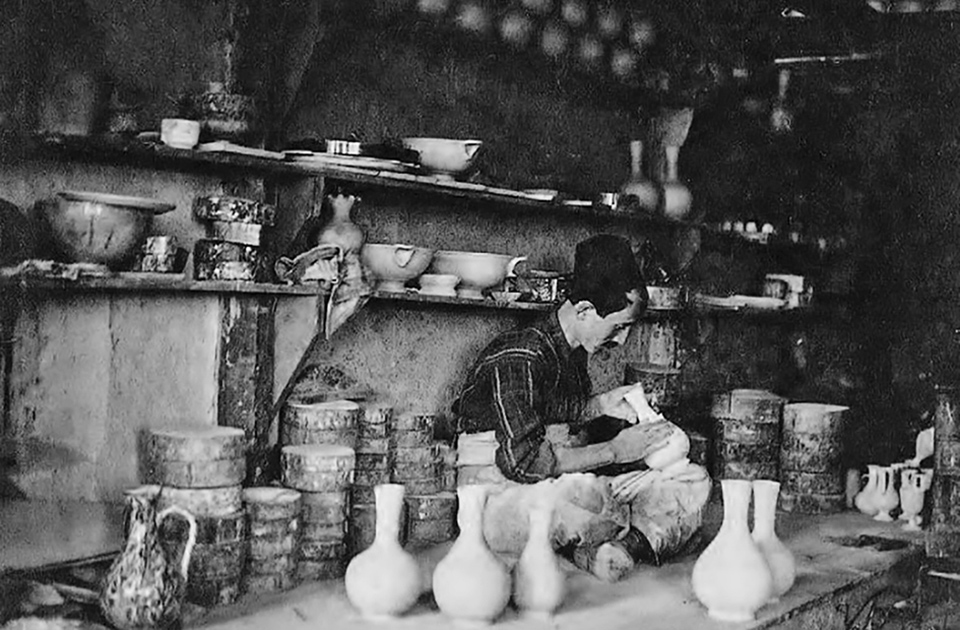
Kogias became interested in Kutahya in 2005, when he purchased a few items with inscriptions in Greek. The idea for the exhibition at the Benaki arose only after the scholar and collector felt that the material he had amassed was sufficient to form the basis of a well-documented book (the show’s catalogue) and would allow viewers to immerse themselves in that world.
Kutahya was producing pottery as far back as the 15th century thanks to the presence of white kaolin clay in the area, but it could not rival Nicaea. Its heyday came later, however, in the 18th century, with the addition of new decorative motifs like human figures, animals, plants, flowers and birds.
The majority of the craftsmen were Armenians and Muslims, and very few were Greek, though all were Turkish-speaking. The number of workshops rose and fell, depending on the circumstances, such as a succession of military clashes in the Ottoman Empire in the 19th century that sapped the male population.
The earthquakes of 1865, meanwhile, gave the industry a boost due to the need to restore many Ottoman monuments.
Benaki Museum of Islamic Art, 22 Agios Asomaton & 12 Dipylou, Thiseio, tel 210.325.1311, www.benaki.org. Opening hours are Thursdays-Saturdays 10 a.m. to 6 p.m. and Sundays 10 a.m. to 4 p.m., through January 16, 2022.
